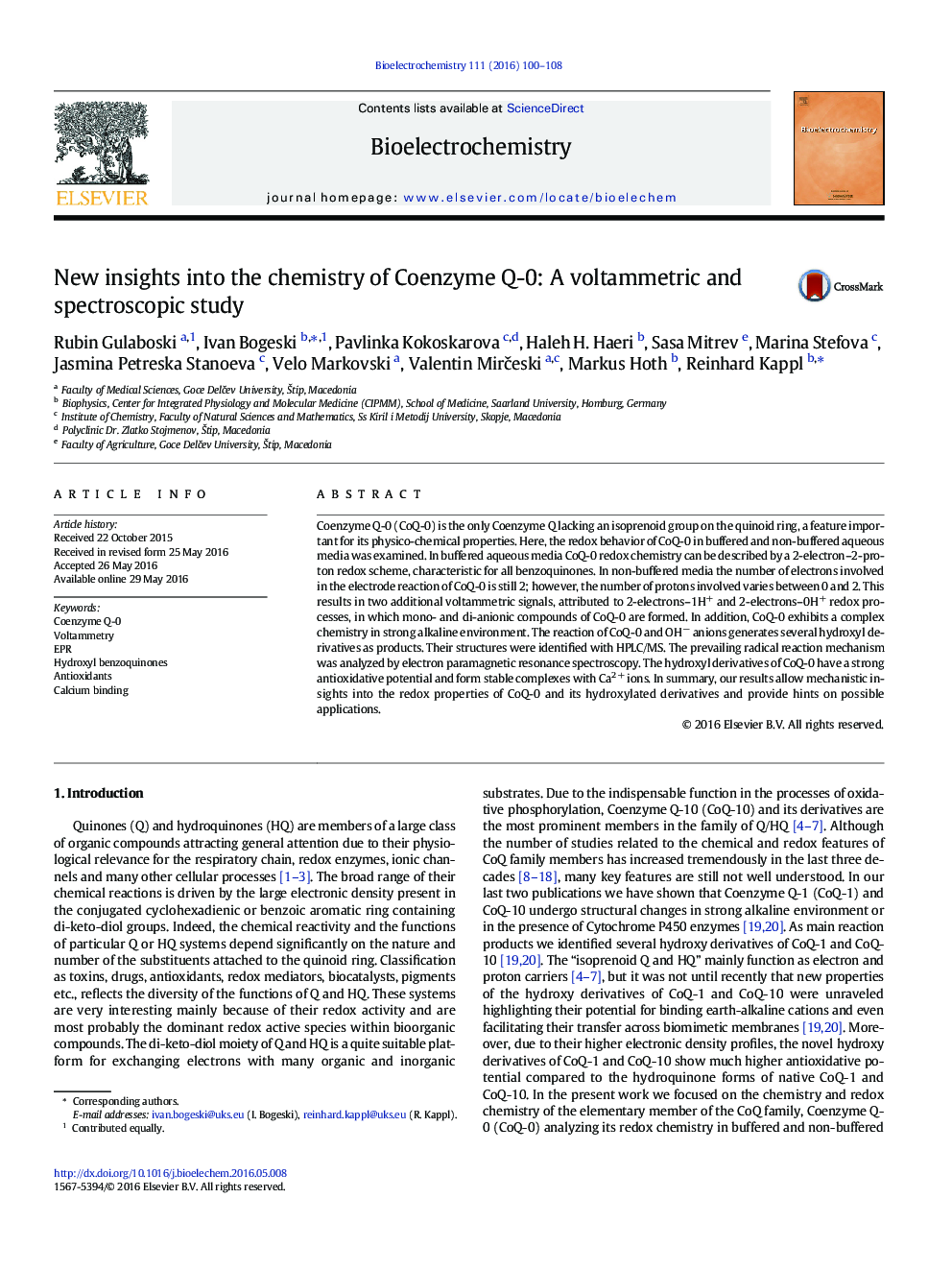| Article ID | Journal | Published Year | Pages | File Type |
|---|---|---|---|---|
| 1266841 | Bioelectrochemistry | 2016 | 9 Pages |
Abstract
Coenzyme Q-0 (CoQ-0) is the only Coenzyme Q lacking an isoprenoid group on the quinoid ring, a feature important for its physico-chemical properties. Here, the redox behavior of CoQ-0 in buffered and non-buffered aqueous media was examined. In buffered aqueous media CoQ-0 redox chemistry can be described by a 2-electron-2-proton redox scheme, characteristic for all benzoquinones. In non-buffered media the number of electrons involved in the electrode reaction of CoQ-0 is still 2; however, the number of protons involved varies between 0 and 2. This results in two additional voltammetric signals, attributed to 2-electrons-1H+ and 2-electrons-0H+ redox processes, in which mono- and di-anionic compounds of CoQ-0 are formed. In addition, CoQ-0 exhibits a complex chemistry in strong alkaline environment. The reaction of CoQ-0 and OHâ anions generates several hydroxyl derivatives as products. Their structures were identified with HPLC/MS. The prevailing radical reaction mechanism was analyzed by electron paramagnetic resonance spectroscopy. The hydroxyl derivatives of CoQ-0 have a strong antioxidative potential and form stable complexes with Ca2Â + ions. In summary, our results allow mechanistic insights into the redox properties of CoQ-0 and its hydroxylated derivatives and provide hints on possible applications.
Related Topics
Physical Sciences and Engineering
Chemistry
Electrochemistry
Authors
Rubin Gulaboski, Ivan Bogeski, Pavlinka Kokoskarova, Haleh H. Haeri, Sasa Mitrev, Marina Stefova, Jasmina Petreska Stanoeva, Velo Markovski, Valentin MirÄeski, Markus Hoth, Reinhard Kappl,
